The Art Scene in South Africa
Since 1948
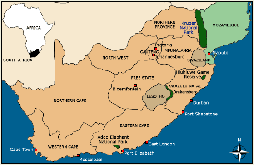 |
 |
|
| Map
of South Africa |
David
Goldblatt |
Sue
Williamson |
| Assignment |
Assignment
Since the beginning of Apartheid in 1948, how has the historical and political context of South Africa affected the art scene there?Background
|
Even though
apartheid had existed for centuries, South African artists have not
always focused on apartheid and themes of oppression and injustice in
their work. One of the earliest and most influential traditions in
South African art is the rock art paintings and engravings by the Sans
people. Rock art often depicted landscape and people and incorporated
geometric elements, and this tradition is still influential in some
contemporary art in South Africa. Another tradition in South African art began during the colonial era with the arrival of the Dutch settlers in 1652. As the Dutch expanded their settlement in South Africa, they increasingly imposed Western culture on the native South Africans, which affected art traditions. Before long, art was seen as a method of recording daily happenings in South Africa for the colonial masters, claiming that their work depicted everyday life in South Africa. |
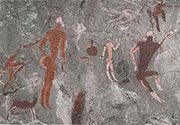
|
With colonialism drawing to a close at the end of the 19th century, South African artists began making works of art that illustrated the true realities of life in South Africa. The two most influential artists at the time were Jan Volschenk (1853-1936) and Hugo Naude (1869-1941). Volschenk was a self-taught painter of landscapes, and his work is often described as primitive. Naude on the other hand left South Africa to study art in London. When he returned to South Africa, Naude intially intended to be a portrait painter, but found himself very drawn to the outdoors and painting landscapes. Volschenk and Naude were considered the first native South African professional painters.
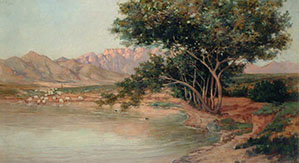 HUGO NAUDE Sheep Watering, 1901 Oil on board (350 x 600mm) |
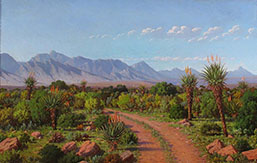 JAN ERNST VOLSCHENK Oil on canvas (695 x 1150 mm) Riversdale Veldt and Mountains,1925 |
Following in the footsteps of Volschenk and Naude, South African artists soon began to look to art as a way to communicate ideas and experiences. "The orientation of local paintings had begun to shift from perceptual description of the landscape to the mechanics of visual expression and the search for personally valid methods of communicating experiences." (accessed at http://www.panafricanartists.org/overcomingmaps3/south_african_art_en.htm) South African artists were now dedicated to modern art and they promoted the idea that art can be more than the romantic picture-postcards the the community of South Africa was used to seeing. Because of this new perspective of art, South Africa was invited to the Venice Biennial in 1950 and the Sao Paul Biennial in 1957.
During the 1960s and 1970s, South African art became more significant and influential. In the 1960s, some South African artists started realizing that the nature of their identity as South Africans had never been explored through the medium of art. In 1963, these artists formed the Amadlozi group, and the intention of this group was "to strip Africa of its mystique and to come to grips with the un-romanticized reality." (accessed at http://www.panafricanartists.org/overcomingmaps3/south_african_art_en.htm) The Amadlozi group included artists such as Cecil Skotnes (1926-) and Sidney Kumalo (1935-). These artists emphasized the concept of "Africanism" in their artwork for the first time in the history of South African art. Beginning in the 1970s, the work of some black South African artists and white South African artists began to merge as both groups focused on similar content in their work. Although some black South Africans were still interested in pursuing the exploration of the African style, white South African artists and several black South African artists were now using art as a way to express their joint social concerns about Apartheid. And by the 1980s, South Africa was fully immersed in the most important tradition in South African art – contemporary art.
Apartheid was a “social and political policy of racial segregation and discrimination enforced by white minority governments in South Africa from 1948 to 1994." Apartheid actually originated during the colonial period, but when it became the legal structure in 1948, it "systematically expanded and enforced the privileges of white South Africans…at the expense of the black majority… black people – a group that included Africans, coloureds, and Indians – lived in an essentially totalitarian and dehumanizing environment in which their every move was restricted…and they were reminded daily, in big ways and little, of their relative powerlessness."
Because apartheid created racial divides in society in general, mainly the separation between whites and blacks, this separation affected all aspects of society and culture, including the visual arts. Although the two groups sometimes intermingled and even made work the addressed similar ideas, the culture of contemporary black South African art was separated from the culture of contemporary white South African art. Fortunately, this split within the contemporary art scene in South Africa did not discourage black artists from making art.
|
In the late
1960s, the first group of professional black South African artists,
known as the Polly Street Group, began making their way to the
forefront of the local art scene. The Polly Street Group acquired
their name because the artists were using a hall in Polly Street
Recreational Centre as an art workshop. Many of the artists in the
Polly Street Group focused on the use of vibrant color and energetic
movement within their compositions, and the most common media included
watercolors, pastels, and oils. Due to the apartheid regime, the Art
Centre was closed in 1960 because many people did not want black people
to have access to cultural facilities in the cities. As groups and schools of black South African artists were emerging across the country, there were also several individuals that were very successful in their own right. Dumile Feni (1939-1991) first began making art in the 1960s, working as a painter and sculptor with no formal art training. Like many black South African artists at the time, Feni work addressed issues related to apartheid, oppression, poverty, and township life. Feni used symbolism and imagery that illustrated destructive life experiences because of apartheid until his death in 1991. |
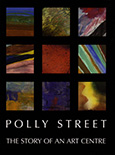 |
Besides Feni, there were several other influential and revolutionary black South African artists working at the time. Lucas Seage (1957-) was one of the first South African artists to use recycled materials in his work; Jackson Hlungwani (1923-) was one of the first South African artist to create art that was site-specific. Willie Bester (1956-) has been described as the “doyen of assemblage," combining photo collage, machinery, debris, and painting into his artwork. Feni, Seage, Hlungwani, and Bester were all focusing on social concerns in their art, which was typical of many black South African artists both during and after apartheid.
Just as there are several black South Africans making artwork related to and protesting against apartheid, there are also many white South African focusing on the same issues in their work. Beginning in the 1970s, white artists joined their black colleagues in the fight against the apartheid regime and used their artwork as a medium by which to illustrate their objections. While there are a handful of contemporary white South African artists that do not specifically focus on apartheid, most white artists in South Africa include political and social aspects of life in South Africa in their art. Some internationally acclaimed contemporary artists who emphasize social, political, and historical concerns of South Africa include Jane Alexander (1959-), Guy Tillim (1962-), Minnette Vari (1968-), Penny Siopis (1953-), and William Kentridge (1955-).
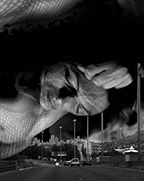 |
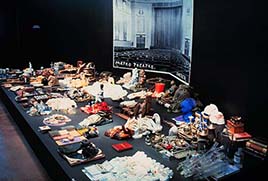 |
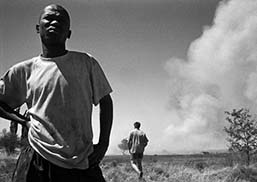 |
| MINNETTE VARI Riverrun, 2004 Video still |
PENNY SIOPIS Reconnaissance (1990-1997) Installation |
GUY
TILLIM Farm fire, near Kroonstad, South Africa 2003 Digital pigment print (58 x 83.5cm) |
Contemporary artists David Goldblatt (1930-) and Sue Williamson (1941-) both use their art as an instrument to protest the apartheid system. Goldblatt and Williamson focus on aspects of apartheid, and the general culture of South Africa that are often forgotten, overlooked, ignored, or suppressed. David Goldblatt has been one of the key artists in South Africa for over five decades, depicting the social and political situation of the country through photography. Until 1999, when he made the shift to color photography, Goldblatt worked solely in black-and-white, using the medium of photography to portray the landscape and the people of South Africa, emphasizing the grave effects of apartheid. Goldblatt’s photographs tackle the political and social issues of South Africa in a manner that is simplistic yet extensive. Another contemporary white South African artist who has worked in the medium of photography is Sue Williamson. After emigrating from London to South Africa at the age of seven, Williamson began her career as an artist in the 1980s working in a variety of media including photography, installation, and printmaking. Similarly to Goldblatt, Williamson addresses political, social, and historical concerns of the South African society, focusing on memories of South Africa under the apartheid regime.
With the end of apartheid fifteen years ago, South Africa still faces many challenges and systematic injustice. The feelings and experiences regarding the political and social situation of South Africa are expressed in the work of contemporary black and white artists. Working in a variety of media, including printmaking, painting, photography, and installation, contemporary South African artists continue to fight for equality in their country through their artwork.
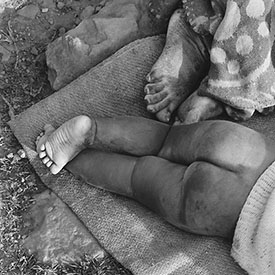 |
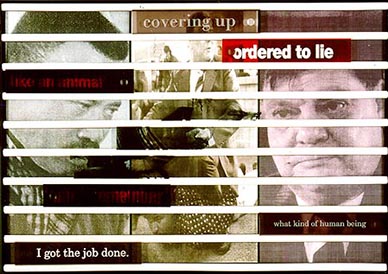 |
| DAVID
GOLDBLATT Grandmother and Child, 1975 Silver Gelatin Hand Print (36 x 36cm) |
SUE
WILLIAMSON Capt Benzien demonstrates the 'wet bag' torture method, 1998 Mixed media (86 x 120 x 6cm) |
| William
Kentridge |
"I am interested in a political art, that is to say an art of ambiguity, contradiction, uncompleted gestures and uncertain ending - an art (and a politics) in which optimism is kept in check, and nihilism at bay." |
| David
Goldblatt |
"Certainly politics has always been on my mind, politics in the broadest sense. The Transported of KwaNdebele, was certainly the most explicitly political, while In Boksburg was a more oblique and muted engagement with politics. In all of the work I have done though I have been engaged with the consequences of our actions and of our values." |
| Guy
Tillim |
"My brand of idealism, that had its roots in the time I started photographing in South Africa during the apartheid years of the 1980s, has dimmed. There was right and wrong, it seemed clear to me on which side I stood. One would forego, what I might now call subtlety, for the sake of making a statement about injustice. The world's press set the tone and timbre of the reportage it would receive, and I for one was bought by it. Perhaps that is why I now look for ways to glimpse other worlds, which I attempt to enter for a while. But one cannot live them all, and usually I am left with a keen sense of my own dislocation." |
| Penny
Siopis |
"In
my recent work I use 'found' objects including found
film. I am
particularly interested in the things people leave behind by force of
circumstance; things which embody very specific memories and
experiences, yet have wider social and cultural resonance. These
objects are complex subjective traces of emotional investment not
always easily expressed. Being 'found' and often made and treasured for
intimate and private reasons, these objects are emblematic of a merging
of private and public worlds." |
Timeline
| 1652
Dutch settlers arrived in South Africa |
1853
Jan Ernst Abraham Volschenk was born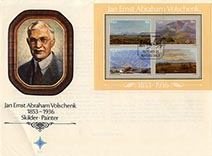

|
1869
Hugo Naude was born

|
| 1879
Volschenk first exhibits artwork in Cape
Town |
| 1902
Naude
exhibits work in Cape Town |
1930
David
Goldblatt was born in Randfontein (currently living and working in
Johannesburg) 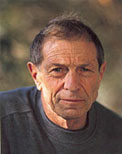
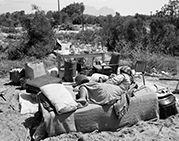
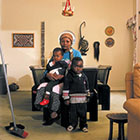 |
| 1936
Jan Ernst Abraham Volschenk dies |
1939
Dumile
Feni was born in
Worcester 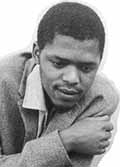

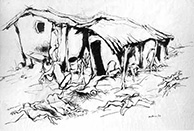
|
| 1941
Hugo Naude dies |
1941
Sue
Williamson was born in England
(currently living and working in Cape Town ) 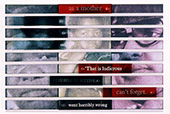
|
| 1950
South
Africa was invited to the Venice Biennial |
| 1952
Polly
Street Art Centre opened in Johannesburg |
1955
William
Kentridge was born in Johannesburg 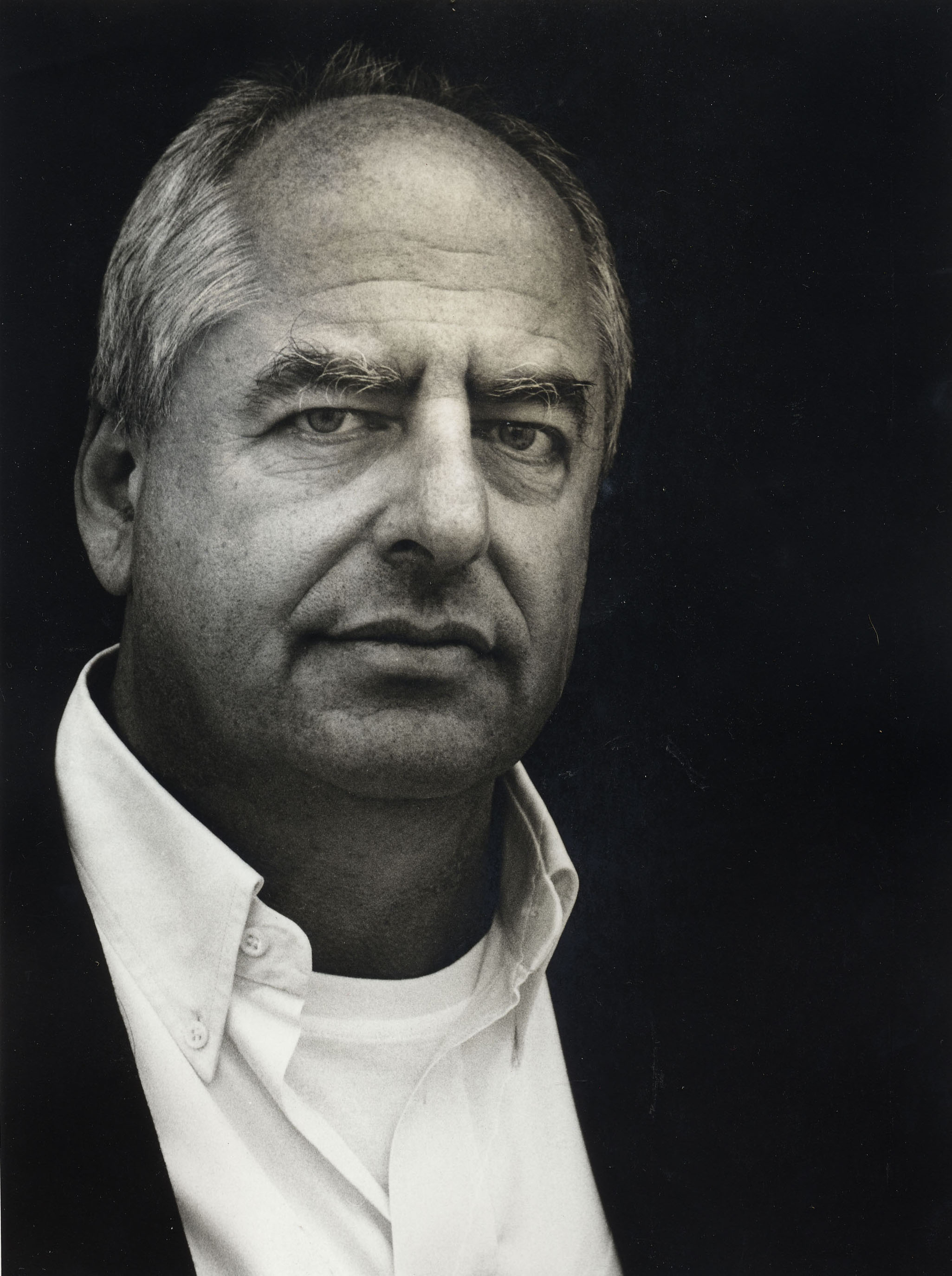
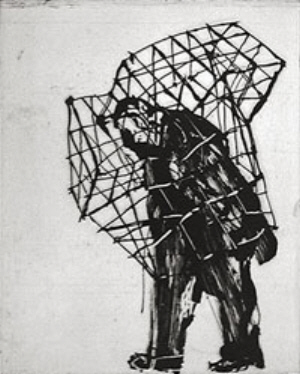
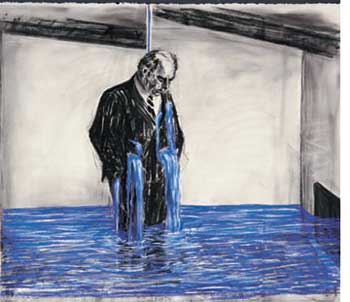
|
| 1967
South
Africa was invitied to the Sao Paul Biennial |
| 1960
Polly
Street Art Centre closed |
| 1962
The
Evangelical Lutheran Church Art and Craft Centre (aka Rorke’s Drift)
was established in Natal |
| 1968
Rorke's
Drift was officially established as the School of Fine Arts |
| 1982
Rorke's
Drift closed |
| 1985
Establishment
of the Thupelo Workshops in Johannesburg (currently located in Cape
Town) |
| 1991
Dumile Feni died |
1994
End of
Apartheid; Nelson Mandela becomes president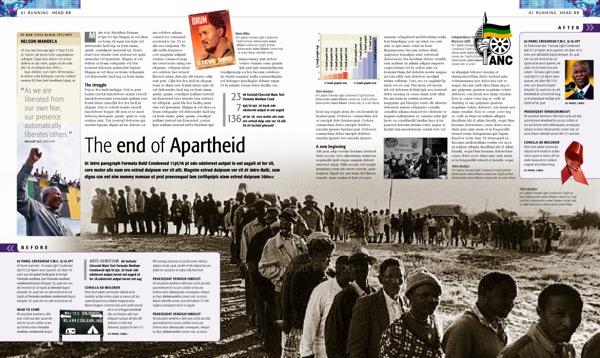
 |
1997
Artthrob, a visual arts publication, was founded by Sue Williamson |
WWW Sites
Some websites about contemporary art in South Africa include:The
International Artist Database
This website has
information on contemporary South African artists such
as Dumile Feni, William Kentridge, Jane Alexander, Sue
Williamson, and
more.
ARTTHROB:
Contemporary
Art in South Africa
Artthrob was founded by
Sue Williamson in 1997 and
it is now "South
Africa's leading contemporary visual arts publication."
Visual Arts
Library: The Legacy Project
This webpage is part of
The Legacy Project
website. (The Legacy Project
"will build a global exchange on the enduring consequences of the many
historical tragedies of the 20th century.") The
Visual Arts Library
features work from artists all over the world, including Jane
Alexander, William Kentridge, and Sue Williamson. The library includes
high quality images of the artwork and also background information on
the artists and the artwork.
Reclaiming Art:
Reclaiming Space - Post Apartheid Art from South Africa
This webpage is part of
the National Museum of
African Art website.
Reclaiming Art: Reclaiming Space was first exhibited in the Museum in
1999, but still remains intact as a virtual
exhibition.
Michael
Stevenson Gallery
This website is for
the Michael
Stevenson Gallery located in Cape Town, South Africa. The website
provides information on upcoming and previous contemporary art
exhibitions, publications by and
about contemporary South African
artists, and background information on contemporary South African
artists such as David Goldblatt, Penny Siopis, and Guy Tillim.
David
Goldblatt: Photographs from South
Africa
This website is a virtual
exhibition of David
Goldblatt's work. It
includes a biography, his photographs, and an audio narration about his
work.
What is Thupelo?
This website (loads very slowly) provides
information about the Thupelo
Workshops,
including previous workshops and upcoming workshops.
List of South African artists on Wikipedia
Some websites about the history of South Africa include:
This website provides general information on the history of South Africa and also details the history of different aspects of life in South Africa, such as places, people, politics, culture, and art.
South Africa Government Online
This is the offical website of the South African Government, and it provides information about current events, key issues, the government, and the history of South Africa.
African National Congress
This is the offical website of the African National Congress (ANC), which is currently the majority party in the South African government.
South Africa's Offical Gateway
This website includes information about current events, Nelson Mandela, the government, the economy, the culture, and the history of the country.
This website provides information related to Apartheid, such as the Bantu Education Act, the Freedom Charter, and the Sharpeville massacre.
Apartheid Museum
Recommended Books
Some books about contemporary artists in Africa include:- Fall, N'Gone and Jean Loup
Pivin, ed. An Anthology of
African Art: The
Twentieth Century. (2002)
- Martin, Jean-Hubert. Africa
Remix: Contemporary Art of a Continent. (2005)
- Spring, Chris. Angaza Africa: African Art Now. (2008)
Some books about contemporary art in South Africa include:
- Comley, Robin, George Hallett,
and Neo Ntsoma. Women by
Women: 50 Years of Women's Photography in South Africa. (2007)
- Golinski, Hans Gunter and Sepp Hiekisch-Picard, ed. New Identities: Contemporary Art in South Africa. (2005)
- Herreman, Frank, ed. Liberated Voices: Contemporary Art in South Africa. (1999)
- Nuttall, Sarah, ed. Beautiful/Ugly:
African and
Diaspora Aesthetics. (2006)
- Perryer, Sophie, ed. 10 Years 100 Artists: Art in Democratic South Africa. (2004)
Some books by and about contemporary South African artists include:
- Bakargiev, Carolyn Christov and Jane Taylor. William Kentridge. (2004)
- Dube,
Prince, ed. Dumile Feni
Retrospective:
Johannesburg Art Gallery. (2007)
- Goldblatt, David. David Goldblatt: Intersections. (2005)
- Goldblatt,
David. South Africa: The
Structure of
Things Then. (1998)
- Williamson, Sue. Sue Williamson: Selected Work. (2003)
Some books about the history of South Africa include:
- Coombes,
Annie. History after
Apartheid: Visual
Culture and Public Memory in a Democratic South Africa. (2003)
- Meredith,
Martin. Diamonds, Gold, and
War: The
British, the Boers, and the Making of South Africa. (2008)
- Nuttall,
Sarah and Carli Coetzee. Negotiating
the Past: The Making
of Memory in South Africa. (1998)
- Thompson, Leonard. The History of South Africa. (2001)
- Worden, Nigel. The
Making of
Modern South Africa: Conquest, Apartheid, Democracy. (2007)
Related Events
Nelson MandelaKeith Haring
This page is copyright © C. T. Evans and L. Shocknesse.
For information contact: cevans@nvcc.edu
Last Modified 1/9/09